With E3 over faster than a hip-hop concert at a gaming convention, I’m reminded of the unique, uncomfortable interactions between gamers, games press, game developers, and… the others. That is, specifically between the “nerdcore” and the “observers,” whose well-intentioned false enthusiasm is matched only by their obvious disinterest in the larger conversation about games.
“My,” the Australian reporter reflects, “games ah quite violent, yih?” It’s an accidental thousand-foot view of a multi-billion dollar entertainment industry consumed by the process and consequence of simulating violence, and it’s one of the clearer pictures of the medium’s reputed knuckle-dragging evolution.
“This is, um, Call of Dyutee… Black Ops… um… Two,” I hear the reporter say, “and it looks like you’ll be shooting each other loads.” Spot-on, and terrifying. Have games become this easy to distill? Has the tidal wave of bullet casings flooded the industry, taking with it the development pioneers and visionaries?
To those professionally involved in this conversation, the answer is an obvious “No.” We’ve played the Unfinished Swans, the Quantum Conundrums, the Scribblenauts Unlimiteds that counteract the ubiquity of meat-grinding games with intelligent, artful design and relatively vanilla themes. Think of the darling indies, those rosy-cheeked cherubim of gaming, ever quirky, often innocent. What would the Aussie journo say to these games and these game makers?
Even more complex, then, is the proposition of using violence to make a coherent argument. To be sure, this conversation will never make it in Melbourne Today (there are plenty of worthwhile Australian publications; this is just a stark example of an outside-in view of the gaming industry, manifest as a foreign inlet that doesn’t quite speak the language). The nuance of a mercy kill, the real horror of the celebrated headshot, and the mind of a serial murderer are difficult to fit into 30-second tech news spots. It’s even harder to convince a removed observer to participate, and harder still to persuade a gamer relishing in the violent catharsis to become unsettled by it.
“Nasílovat!”
In Russian, it means “to rape” or “to violate,” but neither Lara Croft nor the player needs to understand Russian to know what’s coming if she doesn’t act. A cutscene, a struggle; control is given back to the player, a loaded gun between the avatars. It’s pointed at his temple, and no command appears on the screen. It doesn’t need to. The player pulls the trigger, then blood, choking, exasperation, crying, resolution. On the other side, Lara is a different character, silhouetted by a camp in flames, standing tall for the first time in the demo.
If it didn’t upset me, I’d be upset. The moment of Lara’s first kill in Crystal Dynamics’ upcoming reboot, Tomb Raider, gives weight to the often lighthearted affair of murder. Bravo to a studio placing value on life, and involving the player in the evolution of the controlled character (my god, the audacity). Greater than that, I’d wager, is the emotional effect of the scene on us, the players, who perpetrate the act, almost unwillingly condemning Lara to murderous action. She’s shocked, vulnerable, and violated, and it’s all our fault. How could we?
Even the most heart-wrenching movie can’t produce this kind of personal discomfort. There is no interaction on which to place the blame. Shame on Fred Gipson (author) and Disney for Old Yeller’s shotgun spree. Shame on me for valuing Lara’s life over another. Or maybe I’m a hero. Crystal Dynamics makes it clear, at least, that the ramifications of my input aren’t morally “Paragon” or “Renegade.” My choices bandy about in the uncomfortable grey fog of uncertainty, and I’m challenged to bandy with them, to appreciate the irresolution.
Halfway through a gym teacher’s leg the fog rolls back in. The Walking Dead series by Telltale Games is built entirely on operational uncertainty. In Episode Two, Lee (and the player) try to save a former high school coach with his leg caught in a bear trap. The trap won’t budge, the chain won’t break, and walkers are closing in. Lee looks at his axe, then at the leg.
Players can choose not to use five teeth-grinding swacks to chew through the coach’s bone and muscle, but if they do, the mercy hacks do more to confuse than to save. The move is well-intentioned, to be sure, but lacks the satisfaction of, say, finding your princess in the other castle. The quality-of-life versus preservation-of-life is called into question – one of the central debates, by the way, of surviving in a zombocalypse.
In another lawless land of moral ambiguity, a lush jungle disappears into a burning building in effigy to you, your murder. In a hall of televisions, memories of sex and suicide intermingle. Far Cry 3’s villain, Vaas, kneels at the end of the hallucination. Arm raised, he jams the pistol against his chest. “You are me. SHOOT ME, MOTHERF***ER!” Really? Click.
Far Cry 3’s message echoes across its sandbox approach to gunplay. Insanity is repetition, and as the game evolves the player, it evolves the player-character away from repetition and towards a mangled sense of sanity. What starts as tourism becomes the most dangerous game. With a pistol pressed against Vaas’ chest, his suicidal command is the last order the player wants to execute. The conundrum is eerily familiar. A man chooses; a gamer obeys.
A new lesson in disobedience comes from the eagle-eye of Ubisoft Montreal in the just-announced Watch Dogs. Information invasion is by no means a fresh idea, but controlling an efficient psychopath with unparalleled access to public and private networks is as fresh as it is unnerving. He intends murder and manipulates ignorance, hiding in plain sight to continue his “history of violence” on his suspecting celebrity prey.
There’s something profoundly disturbing about stepping into these shoes. More than grey, his mission is a dark errand, a precision penetration in guarded information. Now the player knows a nearby stranger has HIV, and can use that. Bystanders become blunt weapons in traffic. This isn’t the gaudy misfire of collateral damage from Grand Theft Auto IV or Saints Row: The Third. Personal data gives these avatars presumed value as proxies of real people, and the somber tone cements the unsettling motivation. The anonymous lady-walking-dog-#2 has been replaced by Sarah, walking Pudding; we’re made to care.
These experiences are a far cry from some supremely upsetting gaming content that’s emerged over the years (the Half Life 2 mod “School Shooter” comes to mind), but they represent a shift in how developers can respectfully approach violence. For these developers, at least, the kill is no longer a bloody parade, or even the goal (looking at you, Hitman: Absolution), but a tool to communicate desperation and conflicting values. Putting us, the players, in a killer’s mind can alter our emotional response to violence and our inherent desire to preserve life. To become unsettled in this way is to define personal morals; to force decision-making reveals our stance in the fog.
“Sao, um, there’s this bit when a plane flies into a skuyscraper which falls on the character and levels a city block. Just dreadful!”
Finally, we agree.




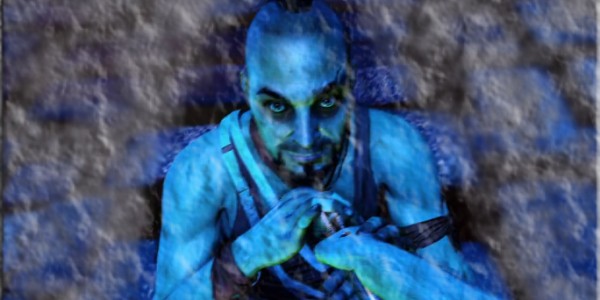
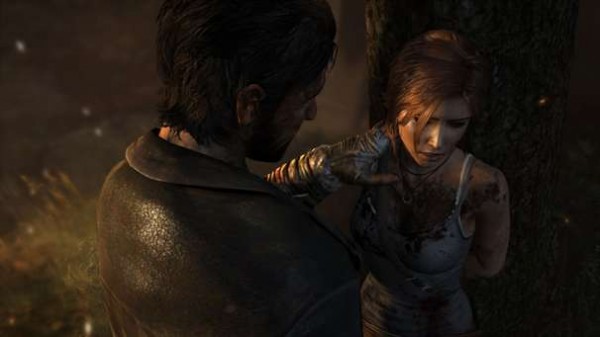
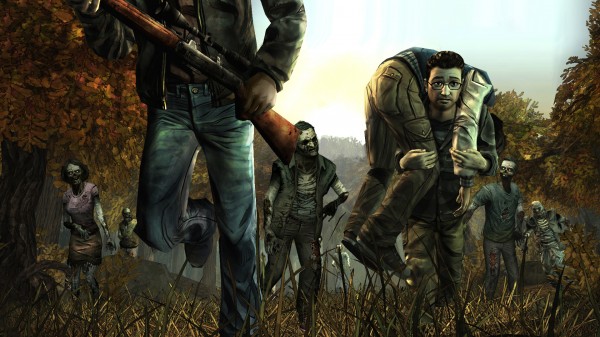
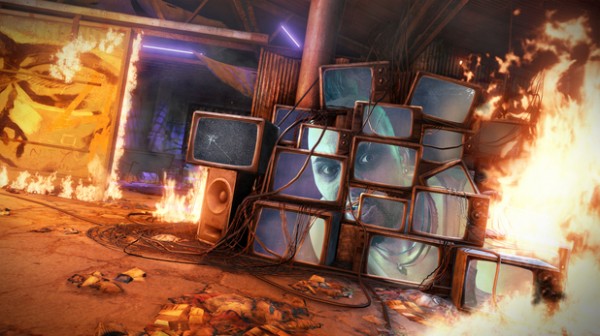
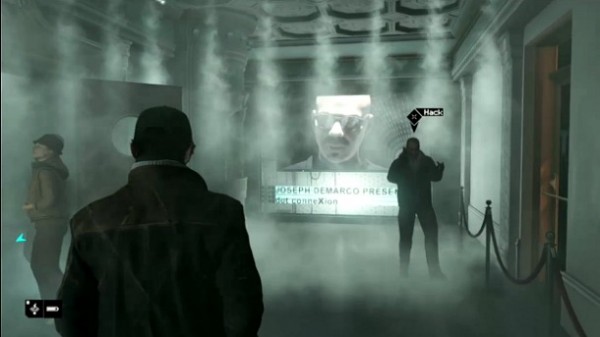














One Comment on "In Defense of Unsettling: Tomb Raider, The Walking Dead: Episode 2, Far Cry 3, and Watch Dogs"